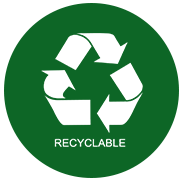A degradable bag refers to a plastic that is easily degraded in the natural environment after adding a certain amount of additives (such as starch, modified starch or other cellulose, photosensitizers, biodegradable agents, etc.) during the production process to reduce its stability.
1. The simplest way is to look at the appearance
The raw materials for degradable plastic bags are PLA, PBAT, starch or mineral powder materials, and there will be special markings on the outer bag, such as the common "PBAT+PLA+MD". For non degradable plastic bags, the raw materials are PE and other materials, including "PE-HD" and so on.
2. Check the shelf life
Due to the inherent degradation properties of degradable plastic bag materials, generally degradable plastic bags have a certain shelf life, while non degradable plastic bags generally do not have a shelf life. This may only be present on the entire outer packaging of the plastic bag, and sometimes it is difficult to determine.
3. Smell with your nose
Some biodegradable plastic bags are made by adding starch, so they smell a faint fragrance. If you smell the aroma of corn, cassava, etc., it can be determined that they are biodegradable. Of course, not smelling them does not mean they are ordinary plastic bags.
4. The label for degradable waste has a unified environmental label on the degradable plastic bag
consisting of a green label consisting of clear mountains, green water, sun, and ten rings. If it is a plastic bag for food use, it must also be printed with a food safety permit QS label and labeled "for food use".
5. The storage of biodegradable garbage bags has a shelf life of only about three months.
Even if not in use, natural degradation will occur within five months. By six months, plastic bags will be covered with "snowflakes" and cannot be used. Under composting conditions, even newly produced biodegradable plastic bags can be completely degraded in just three months.





Biodegradable materials are mainly used in fields such as biodegradable plastics and biodegradable fibers. Biodegradable materials have excellent toughness and heat resistance, good processing performance, and their performance basically reaches the level of general plastics. They can be used to make packaging materials, catering utensils, agricultural films, disposable products, sanitary products, textile fibers, shoe and clothing foam, and are expected to be used in high-tech fields such as medical materials, optoelectronics, and fine chemicals. Biodegradable materials, on the other hand, have enormous advantages in renewable raw materials, low-carbon environmental protection, energy conservation and emission reduction
Post time: Apr-28-2023








